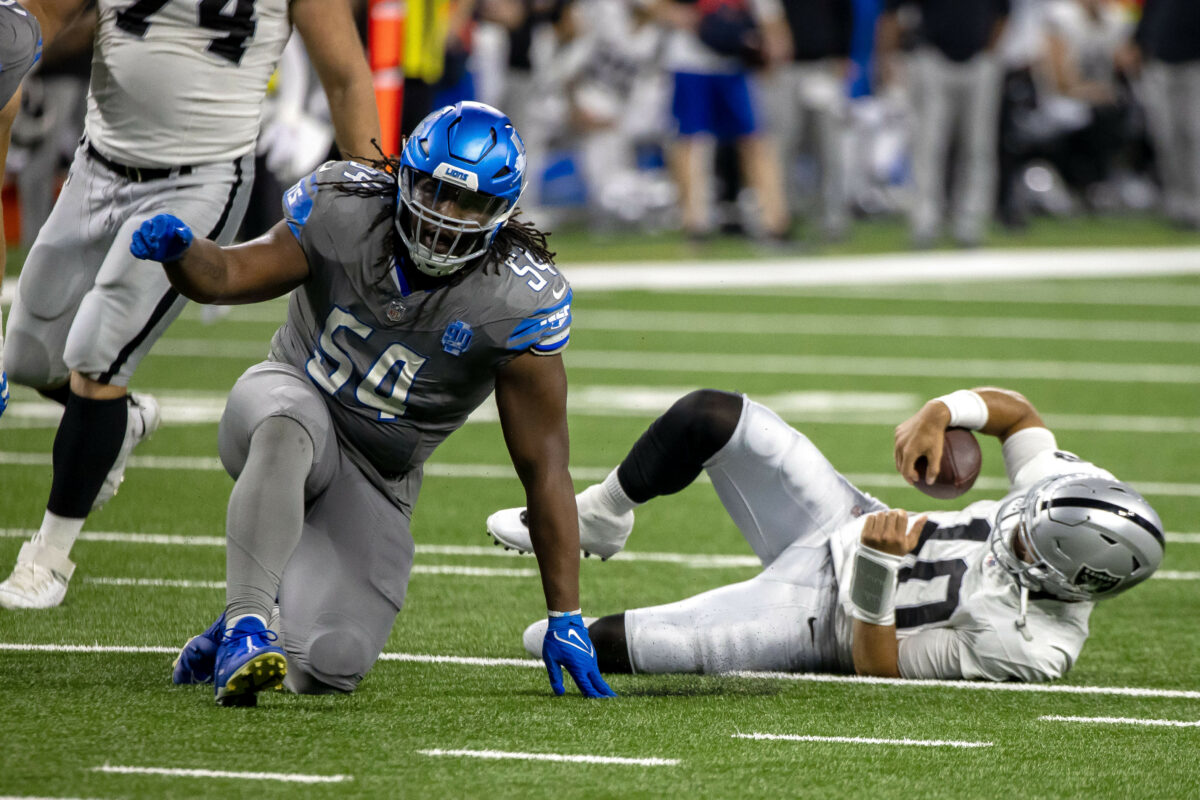Jimmy Garoppolo is a problem.
He always kinda has been, but San Francisco 49ers head coach Kyle Shanahan was able to mitigate his inability to throw downfield and penchant for tossing wild, interceptable passes on short routes by surrounding him with playmakers. With guys like Deebo Samuel, George Kittle and Brandon Aiyuk on the roster he was able to help push the Niners to three conference title games in four years.
The Las Vegas Raiders tried to replicate that success, knowing it had a specific ceiling but understanding fully the struggle of landing a franchise quarterback on the open market. It had a ready-made crutch for Garoppolo’s worst throws in Davante Adams, who is about as good a bailout artist as you’ll find in the NFL.
But Adams, through no fault of his own, has just 14 catches in his last four weeks, forced to watch a near-sighted passer throw well outside his field of vision. Las Vegas is 2-2 in these games, but that’s more a function of having played the two-win Green Bay Packers and New England Patriots in back-to-back weeks. Before getting rolled by the Detroit Lions — a game where Adams had seven targets and one catch — the Raiders also snuck in an 18-point loss to Tyson Bagent and the Chicago Bears.
Garoppolo didn’t play against Chicago (and he won’t against the New York Giants in Week 9, because he’s been benched), but he averaged just 165 passing yards per game in the other three contests. He threw more interceptions (three) than touchdowns (two) and lost 70 yards via sack. His expected points added (EPA) in that span is -0.201 per play — worse than any other starter but Joshua Dobbs and Zach Wilson. Advanced stats paint him as one of the worst quarterbacks in the NFL this fall. And that’s what the Raiders, now coach-less after (justifiably) firing Josh McDaniels, owe $11 million — and a $28 million salary cap — to in 2024.
Let’s talk about those stats. Expected points added (EPA) is a concept that’s been around since 1970. It’s effectively a comparison between what an average quarterback could be expected to do on a certain down and what he actually did — and how it increased his team’s chances of scoring. The model we use comes from The Athletic’s Ben Baldwin and his RBSDM.com website, which is both wildly useful AND includes adjusted EPA, which accounts for defensive strength. It considers the impact of penalties and does not negatively impact passers for fumbles after a completion.
The other piece of the puzzle is completion percentage over expected (CPOE), which is pretty much what it sounds like. It’s a comparison of all the completions a quarterback would be expected to make versus the ones he actually did. Like EPA, it can veer into the negatives and higher is better. So if you chart all 32 primary quarterbacks — the ones who played at least 128 snaps in eight weeks — you get a chart that looks like this:

Top right hand corner is good. Bottom left corner is bad. Try splitting those passers into tiers and you get an imperfect seven-layer system that looks like this:

These rankings are sorted by a composite of adjusted EPA and CPOE to better understand who has brought the most — and the least — value to their teams across the small sample size. It’s not a full exploration of a player’s value, but it’s a viable starting point. Let’s take a closer look.
